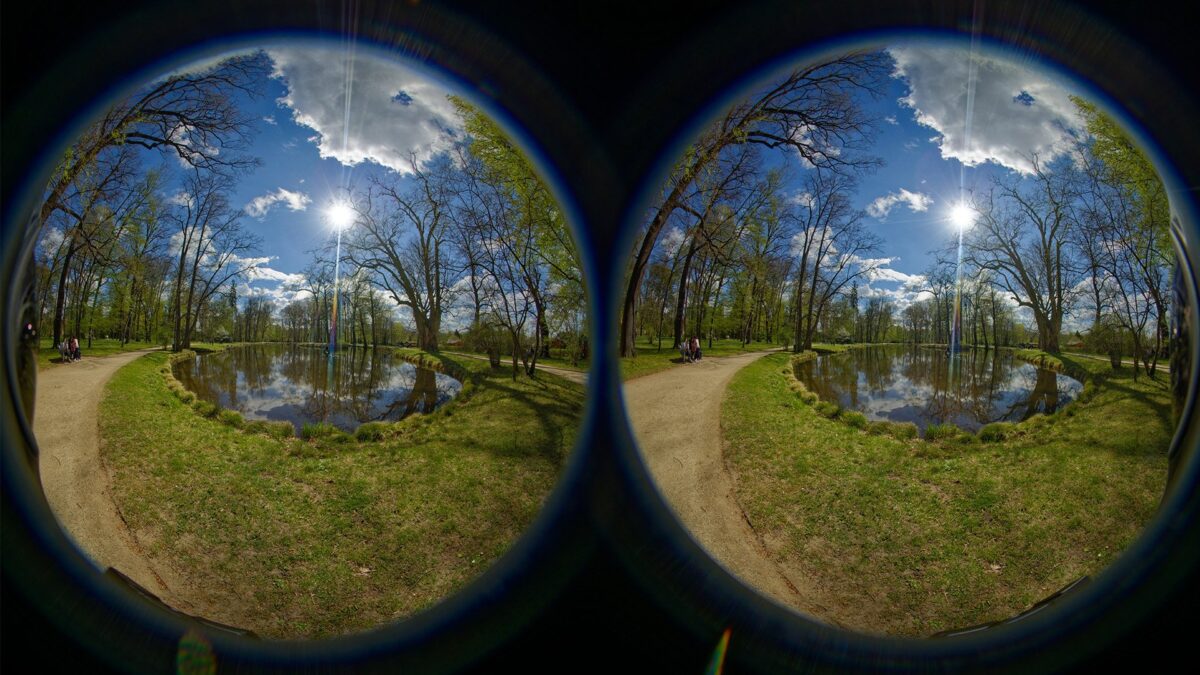Check out these stunning VR videos and photos that rival reality

Thomas Huebner is a passionate VR photographer. He shows shots in a quality that you rarely get to see.
Immersive photography and videography is still in a niche. The playback devices, i.e. VR headsets, are far from being widespread enough to make it worthwhile for camera manufacturers to invest in this technology on a large scale. As a result, there are few affordable VR cameras with good quality on the market. The higher-end products are usually expensive or so complicated to use that they are only suitable for enthusiasts.
Since there are no VR cameras for the mass market, good content is limited, which in turn prevents wider adoption of the technology. It's a vicious cycle that the VR industry knows all too well.
Low-resolution, washed-out or grainy VR footage: This should sound familiar to anyone who has come into contact with virtual reality in the last ten years. The reputation of VR photography and videography is correspondingly poor. This is especially true for the 360-degree format, which is mostly monoscopic, i.e. without a natural impression of depth.
Wonderfully lifelike
But it can be done differently. While browsing Meta Quest TV recently for interesting content, I came across impressively sharp and high-quality VR footage from a German VR photographer and videographer: Thomas Huebner.
His videos piqued my interest, so I contacted Huebner to find out what cameras and processes are used to create his videos.
I was particularly taken with four videos. These are moving images on the one hand, and slideshows of high-resolution VR photographs on the other:
The photographs in particular have a strong suggestive power that makes me re-evaluate the immersive potential of VR photography and videography. The environment seems so real in places that you want to touch it.
What if such sharp and lifelike shots were possible one day with conventional VR cameras? We are still a long way from that.
High-end technology and a lot of post-processing
For the moving images, Huebner uses a combination of Canon's R5 professional camera and the accompanying Canon VR lens. This setup costs around 6,000 euros. And the work only begins when the footage is captured.
For post-processing, Huebner uses several layers of software: for stereoscopic alignment and cropping, stitching, denoising and sharpening the footage. A film filter was also used in the Pillnitz Palace footage to extend the exposure time per frame and the sunlight in the 3D image.

Huebner's stereo camera rig, which he uses for his impressively immersive VR photos. | Image: Thomas Huebner
The VR photographs, in turn, were taken with a homemade stereo camera system consisting of two Olympus PEN-Fs, each capturing the left and right images. Thanks to sensor-shifting technology, the resolution of the photographs in raw format is around 100 megapixels per eye, which is why the images have to be downscaled afterwards. Again, several programs are used for post-processing, including the AI-based image optimization solution Topaz.
VR photography: A passionate VR hobby
Huebner is a master of his craft.
"I explore the camera features, just like every photographer should get to know his camera. I find out what the camera gives me with which settings and whether I can create an improvement with filters between lens and sensor," he says. "With current software and hardware, I'm looking for an optimal and efficient workflow to get a result worth seeing and, in video, to be able to render everything through the graphics cards."

"I combine leisure time in nature with technical challenges to improve quality. When hiking without a camera, I miss something," says Thomas Huebner. | Image: Thomas Huebner
His VR content, he says, is "in each case the result of what has been achieved from the respective technology, along with the more advanced computer technology and software."
Despite all his expertise, Huebner is not a professional photographer and videographer, and is only involved with immersive recording techniques in his spare time. Over the past few years, he has largely taught himself these techniques through trial and error and by supporting other enthusiasts who share their experiences online.
"VR needs a broader user base"
He has been pursuing his hobby since 2010, triggered by the 3D boom, which quickly died down. When Google introduced the VR180 format in 2017, Huebner upgraded his Fuji 3D camera to a 180-degree camera by adding wide-angle lenses and wide-angle converters. He entered VR videography, or moving VR footage, less than a year ago with the release of Canon's VR Lens.
Huebner uploads his slideshows and videos to Meta Quest TV as well as the free VR video platform DeoVR, which he says offers better image quality and is also available for Pico 4 and SteamVR.
For the future, Huebner hopes for cheaper 3D cameras for consumers and a renewed commitment from Google to the VR180 format. Then there could also be enough high-quality material for standalone VR headsets, which would in turn attract more consumers. Huebner also hopes that Canon, which has created a "very good solution," will continue to invest in VR.
However, it is also clear to him that VR technology must first become more widespread before VR photography can also develop further. "Only with a broad user base will virtual reality for consumers survive in the long run," says Huebner.
You can find his films in Meta Quest TV by searching for Thomas Huebner Dev or clicking on the video links above. In the VR app DeoVR, you can find Huebner's channel under HuebiVR.
Note: Links to online stores in articles can be so-called affiliate links. If you buy through this link, MIXED receives a commission from the provider. For you the price does not change.
